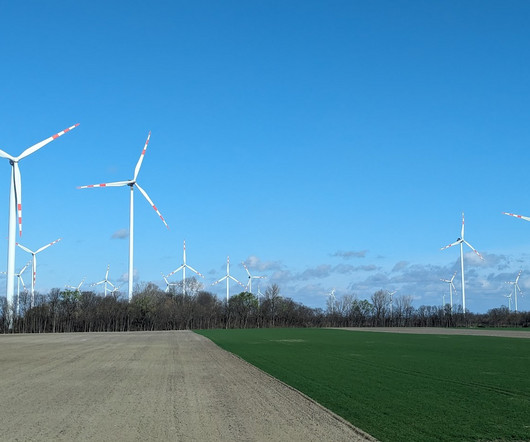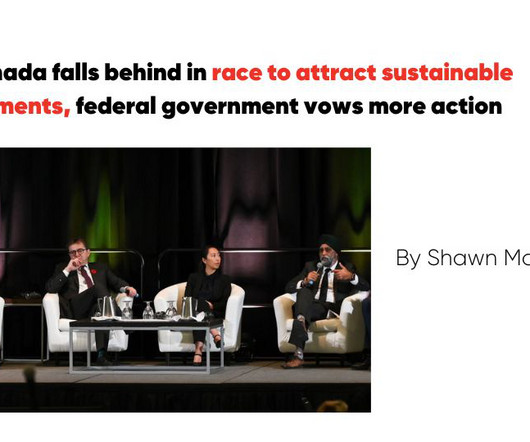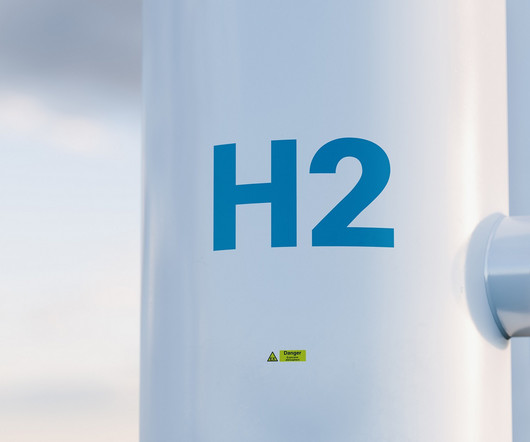ESG Today: Week in Review
ESG Today
NOVEMBER 17, 2024
See below for the highlights of the past week, and get all your ESG news at ESG Today: Sustainability Goals, Initiatives and Achievements IKEA Invests $1.6

ESG Today
NOVEMBER 17, 2024
See below for the highlights of the past week, and get all your ESG news at ESG Today: Sustainability Goals, Initiatives and Achievements IKEA Invests $1.6

Chris Hall
MARCH 13, 2025
According to the report, debt financing remains the dominant source of sustainable investment flows, with green European bond issuance exceeding 200 billion every year since 2021. Outstanding green loans stood at 908 billion in 2023 while green bond volumes reached 781 billion.
This site is protected by reCAPTCHA and the Google Privacy Policy and Terms of Service apply.

Corporate Knights
FEBRUARY 8, 2022
When I led Canada’s Social Investment Organization (SIO) in the early 2000s, one of our most important debates concerned the question of whether the organization should develop an industry-wide label for socially responsible investment, as sustainable investing was called back then.

Corporate Knights
NOVEMBER 2, 2023
Canada is lagging in its efforts to drive private capital into sustainable investments to finance solutions on climate change and other environmental challenges. The post Canada is falling behind in global race to attract sustainable investments: Guilbeault appeared first on Corporate Knights.

ESG Today
SEPTEMBER 16, 2024
The new fund is launching with $400 million in commitments at its first close, with initial investors including Toyota Motor Corporation, Iwatani Corporation, Sumitomo Mitsui Banking Corporation, MUFG Bank, Tokyo Century Corporation, Japan Green Investment Corp. for Carbon Neutrality, and the Bank of Fukuoka.

Corporate Knights
MARCH 7, 2023
The European Union, China, the United Kingdom and about 20 other countries are developing such taxonomies as a way of discouraging greenwashing and channelling investment to the climate transition. The EU’s taxonomy has been particularly controversial because of its inclusion of natural gas and nuclear as “green investments.”

Corporate Knights
MARCH 1, 2023
A European green taxonomy The European Union has produced a green taxonomy that mostly excludes fossil fuel projects from the sustainability label, though it controversially includes some natural gas uses and nuclear as “sustainable” investments. C target.
Let's personalize your content